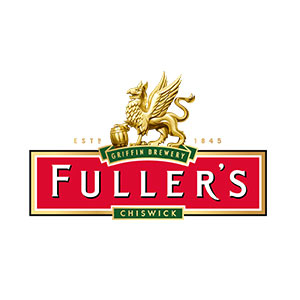Here's a topical quiz question for all you Point-to-Point enthusiasts. Who is the leading rider this season at Cheltenham? Answers at the base of this article.
Racing attracts a very varied audience, which is part of its attraction. This is in part through the way individual fixtures are promoting themselves, part geographical, and part cultural. A crowd at Kempton does not always exhibit the same characteristics as one at Roscommon for example. 25 years ago, social anthopologist Kate Fox wrote an entertaining take on the racing audience called The Racing Tribe - an excellent and highly entertaining analysis of the working elements of the raceday crowd. As a result of that work, I persuaded her to write a piece for an annual report on the commercial health of the sport called Jump Racing Focus, published in order to attract inward investment from sponsors.
I've always divided the racing audience into three overlapping sections for a simpleton's view of the sport, covering Gamblers - focused on beating the bookies and winning in the ring; Wannabes - those directly involved with the horses, aspiring to be the next A P McCoy; and Socialites, enjoying a day out, a drink and to meet new people. Inevitably, in a Venn diagram of the three sections, whilst there are folk on the margins of each section, a majority share two or more of these attributes.
Racing is a sport dominated by numbers: numbers of runners; number of fixtures, odds to a £1 stake, £ spent on yearlings at the sales. Statistics are at the heart of the sport, yet there is less championing of statistics than in comparable sports like cricket, where folk like Bill Frindall and the current Andy Zaltzman have become household names.
I fall into the Wannabe crowd descriptor, and have always been loath to denigrate the sport I love to a set of statistics, yet there are some trends you simply shouldn't ignore. Here are a few to test over the coming months.
Most trainers are fiercely loyal to their local courses, and support them through thick and thin. It should come as no surprise that Gary Moore is leading trainer at Fontwell, and only pipped by Chris Gordon for the same role at Plumpton. After all, the size of the stable gives him an inherent advantage in volume alone.
Others however, have made individual courses quite their own. Take the seemingly quiet Cumbrian village that is Cartmel, home to sticky toffee pudding, hardly a diet for aspirant Jump jockeys. It takes a Cartmelian to know this quirky little course, and James Moffat, who took over his father's training business on his retirement from race riding in 2003, has an outstanding record at his local track. His 165 runners over the past 5 years have captured 31 races at a highly respectable 19% strike rate. Maybe it's the lack of travel that gives them extra wings.
The same is the case at Brighton, where Evesham-based Tony Carroll enhanced his own impressive strike rate with a treble on Wednesday this week to reinforce his top dog status. His 45 winners over the past 5 years number more than twice as many as his nearest pursuer.
Others to look out for include Gordon Elliott at Perth, Donald McCain at Muselburgh and Catterick, Anthony Honeyball at Fontwell and Milton Harris at Stratford.
But if this sounds too much like a list of middle-ranking stables and smaller tracks, there's good reason for it. The strike rates of all the top trainers drop in the intense competition incurred at Grade I courses. Follow the likes of Nicky Henderson blindly at Cheltenham and be sure to go home with lighter pockets, yet at lowly Worcester, his 24% strike rate would have won you £20.30 to a £1 stake these past 5 seasons.
Ditcheat to Plumpton is a pig of a journey, which may be one reason Paul Nicholls is sparing with his runners at the east Sussex track. Yet his 38% success rate makes this a rare racecourse where the champion trainer returns a positive stake to a £1 bet.
Of course, part of the trainer's art is in placing of his horses to give them best advantage. Some of this has to do with type of going, time of year, and specific conditions to the race. But there's little doubt that some horses also put in their best work on some racecourses more than others.
Red Rum is a classic case in point; a horse that improved for running over the National fences rather than a park course. Three Nationals later, he'd more than proved his point.
More recently, Balthazar King showed a keen affinity for Cheltenham, winning 9 of his 28 starts in chases at the home of the sport, along with a further 4 second placings. The Philip Hobbs-trained superstar found a niche in Cross Country racing, which also saw him win three times in France at Craon and Lion d'Angers, where his exploits in the Grand National the previous Spring rather passed the crowd by.
The cross country genre tends to attract specialists, whether these are trainers like Enda Bolger, or horses like the great Tiger Roll, winner of two Grand Nationals and seven times a winner at the Festival.
Some might argue that the likes of Desert Orchid, Wayward Lad or Kauto Star were Kempton specialists, but I think the truth is that they were just outstanding horses that would have beaten their peer group in any generation and at any course. Even the famous grey who led with the off fore managed to win around a left-handed Cheltenham!
The last word in course specialists has to go to Manhattan Boy, a diminutive dark bay trained at Lewes by John Ffitch-Heyes in the eighties and nineties. He ran 62 races over a nine year period to 1994, winning 8 races, all at Plumpton. In his latter years, he wasn't campaigned anywhere else. Just a home boy perhaps...
Now, whilst you've been reading, you've also been thinking of the answer to my question. Who is the leading rider at Cheltenham this season. Bradley Gibbs is the answer, perhaps the only time Bradley will lead this particular leaderboard, after his double at the Hunters' evening that concluded Cheltenham's season, which of course, falls into a new championship.







